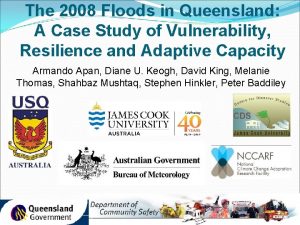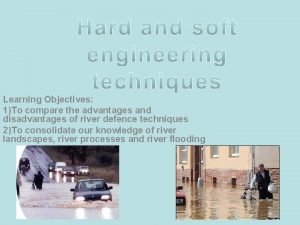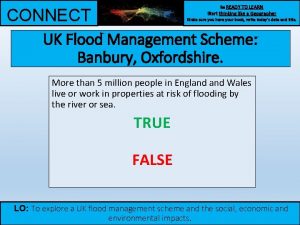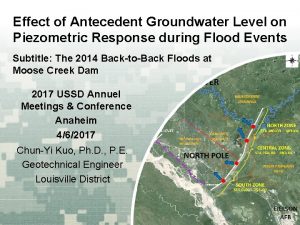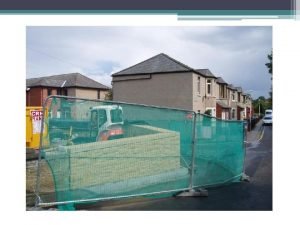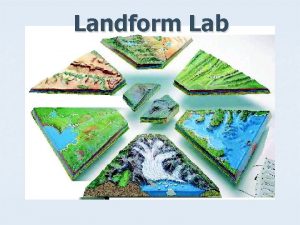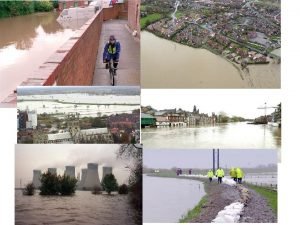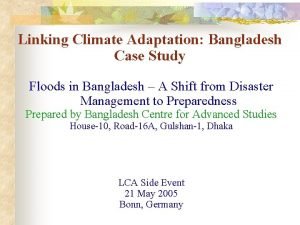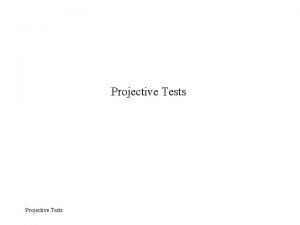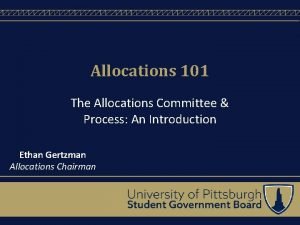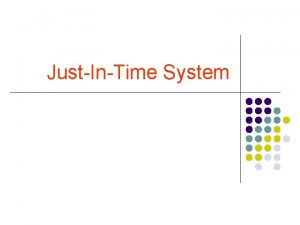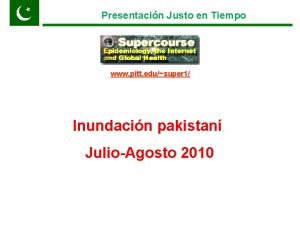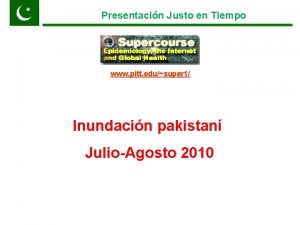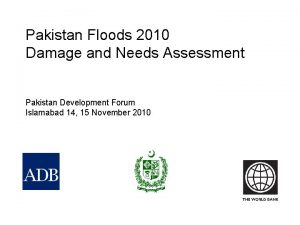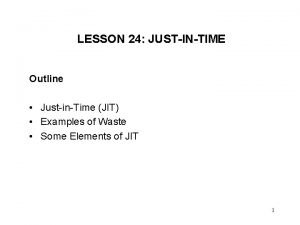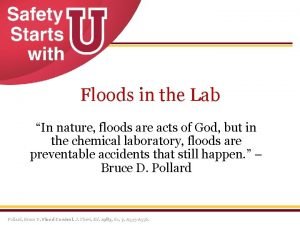JustinTime Lecture www pitt edusuper Pakistan Floods JulyAugust








































- Slides: 40

Just-in-Time Lecture www. pitt. edu/~super/ Pakistan Floods July-August 2010

Mission Statement Pakistan The Global Disaster Health Network is designed to translate the best possible scholarly information to educators worldwide.

Pakistan What is the Disaster Supercourse? What is a JIT lecture? http: //www. pitt. edu/~super 1

Lecture Highlights Pakistan • What is a flood? • Pakistan country • Pakistan health statistics before the flood • Impacts of Pakistan floods 2010 • Causes of Pakistan floods 2010 • Response to Pakistan floods 2010 • Health needs of the floods affected communities • How to protect ourselves from floods? • Disaster risk reduction

Pakistan Country Pakistan Source: http: //geology. com/world/pakistan-satellite-image. shtml

Pakistan Country Pakistan Capital: Islamabad Population (2010): 170, 294, 000 Largest city: Karachi Density: 211. 8/ Km 2 Official language(s): Urdu and English GDP (PPP) (2010): Total: $451. 972 billion Per capita: $2, 731 Regional languages: Punjabi, Pashto, Sindhi, Seraiki and Balochi Demony: m Pakistani Government: Federal Parlimentary Republic Total area: 803, 940 Km 2 (36 th world largest country) Source: Wikipedia GDP (nominal): Total: $177, 901 billion Per capita: $1, 067 Gini (2005): 31. 2 (Medium) HDI (2007): 0. 572 (Medium) Currency: Pakistani Rupee (Rs. )

Pakistan Health Statistics Pakistan Life expectancy at birth m/f (years): 62/63 Healthy life expectancy at birth m/f (years, 2003): 54/52 Probability of dying under five (per 1000 live births): Probability of dying between 15 and 60 years m/f (per 1000 population): 97 218/194 Total expenditure on health per capita (Intl $, 2006): 51 Total expenditure on health as % of GDP (2006): 2. 0 Source: World Health Statistics 2008 (Figures are for 2006 unless indicated)

Floods Pakistan A flood is a temporary covering by water of land not normally covered by water Some floods develop slowly, some flood s happen during a very short time Floods are one of the most common hazards in the world Floods trend and their intensity are increasing due to climate change worldwide.

Flash Floods Pakistan Flash floods can develop quickly, sometimes in just a few minutes and without any visible signs of rain The flash floods’ lead time in some part of the US is as short as 60 seconds and in west part of Golestan province, Iran, as 15 minutes Is the most killer type of floods

Floods can occurs: Pakistan Outside a river or stream, when a levee is breached When a dam breaks In rivers, when flow exceeds the capacity of the river channel Damage to homes and businesses if they are placed in flood plains of rivers

Human Beings are at increasing risk of floods! Pakistan Human being likes to live next to water! No matter how the areas are threatened by floods! Of course, the human being has the experience to mitigate the risk of floods in many areas. But most parts of the world do not know about these experiences or do not have enough capacity to use them!

Floods Adverse Effects Pakistan Primary effects Physical damage - Can damage any type of structure, including bridges, cars, buildings, sewer systems, roadways and canals Casualties - People and livestock die due to drowning. It can also lead to epidemics and waterborne diseases. Secondary effects Water supplies – Contamination of waters Diseases - Unhygienic conditions and spread of water-borne disease Crops and food supplies - Shortage of food crops can be caused due to loss of entire harvest. Trees - Non-tolerant species can die from suffocation. Tertiary/long-term effects Economic - Economic hardship, due to: temporary decline in tourism, rebuilding costs, food shortage leading to price increase , etc.

World’s Deadliest Floods Pakistan Event 1931 China floods Death 2, 500, 000 - 3, 700, 000 1887 China Yellow River flood 900, 000 - 2, 000 1938 China Yellow River flood 500, 000 - 700, 000 1975 China Banqiao Dam failure, result of Typhoon Nina 2004 Indonesia Indian Ocean tsunami 1935 Yangtze river flood 1950 Netherland, St. Felix’s flood storm surge 1971 North Vietnam Hanoi and Red River Delta flood 1911 China Yangtze river flood 231, 000 230, 000 145, 000 >100, 000

Flood Damages to Pakistan, July-August 2010, Pakistan by Affected Provinces BALOCHISTAN KPK PUNJAB SINDH AJ&K GB G. Total Deaths 24 1068 103 44 69 183 1491 Injured 98 1056 350 405 83 60 2052 Houses Damaged 19, 619 179, 874 500, 000 271, 699 6, 472 2, 820 980, 484 KPK: Khyber Pakhtunkhwa AJ&K: Azad Jammu and Kashmir Source: Pakistan National Disaster Management Authority (NDMA). http: //ndma. gov. pk/flood-2010. html

Comparison of Pakistan 2010 Floods Damages with. Pakistan other Major Disasters Population Affected Area Affected (Sq Km) Deaths Injured Household Damaged Est. Economic damage (Million US$) PAKISTAN FLOOD * (August 2010) EARTHQUAKE PAKISTAN (Oct 2005) 14, 571, 885 3, 500, 000 132, 000, 30, 000 1, 313 1, 588 73, 338 128, 309 722, 508 600, 152 KATRINA NARGIS CYCLONE USA MYANMAR (Aug 2005) (May 2008) 5, 200 *Based on initial assessments Source: Pakistan National Disaster Management Authority (NDMA). http: //ndma. gov. pk/Documents/flood_2010/flood_comparison. pdf 500, 000 2, 420, 000 23, 500 1, 836 84, 537 19, 359 450, 000 125, 000 4, 000

Map of Flood Affected Area in Pakistan

2010 Extreme Weather Events around the World ! Pakistan Heat wave and wildfires in the Russian Federation Monsoonal flooding in Pakistan Rain-induced landslides in China Calving of a large iceberg from the Greenland ice sheet Droughts and fires in Australia High-temperature days in the eastern the US Source: WMO. http: //www. wmo. int/pages/mediacentre/news/extremeweathersequence_en. html

Pakistan Floods 2010: Is it related to Climate Change? Pakistan Aggravated the Monsoon activity by the la Niña phenomenon in the Pacific Ocean, according to World Meteorological Organization (WMO) Scientific projections show the association between intense extreme weather events and global warming, however, longer time investigations required to establish whether an individual event is attributable to climate change! Until the science finds absolute relationship, in the meanwhile, however, we can protect the globe from carbon-emitting industries! Source: WMO. http: //www. wmo. int/pages/mediacentre/news/extremeweathersequence_en. html

El Niño/La Niña-Southern Oscillation, or ENSO Pakistan A climate pattern that occurs across the tropical Pacific Ocean on average every 5 years (ranged 3 to 7 years) Characterized by temperature variations of the surface of the tropical eastern Pacific Ocean: Warming phase: El Niño, accompanies high air surface pressure in the west Pacific Cooling phase: La Niña, accompanies low air surface pressure in the west Pacific. Sources: UN/ ISDR, Living with Risk, Geneva, 2004 Wikipedia. http: //en. wikipedia. org/wiki/La_nina

Pakistan Floods Forecasting Pakistan You can follow the floods treat in Pakistan through Pakistan Meteorology Organization at: http: //www. pakmet. com. pk/FFD/index_files/fbc. htm GIS maps of floods affected areas can be found at: http: //www. pakmet. com. pk/Flood. Map/Floodwar/floodwar-01. html

Response to Pakistan Floods Pakistan National and international communities has launched the immediate response to the affected people in Pakistan However, there are difficulties during disaster responses: Millions are in need Inaccessible or hard to reach areas, as the roads are destructed and lands are submerged by floods water Political relationship affects providing or accepting the relief aids Donors are concerned whether the funds will reach Taliban instead flood victims Security issues Unexploded mines

Health Cluster: Pakistan the Coordination Mechanism on the Ground Disasters brings many players to the field. To maximize the coordination, health partners need to work to jointly assess and analyse information, prioritize the interventions, build an evidence-based strategy and action plan, monitor the health situation and the health sector response, adapt/re-plan as necessary, mobilize resources and advocate for humanitarian health action. WHO is the leading agency and coordinates the Health Cluster. Read more about Health Cluster at: http: //www. who. int/hac/global_health_cluster/about/en/index. html

Pakistan Health Needs: Pakistan Safe drinking water Appropriate food Doctors & nurses Medicine Disease surveillance system Reproductive health Mental health support Be alert for the water-borne outbreaks Please see the Health Cluster report at: http: //www. who. int/hac/crises/pak/sitreps/16 august 2010/en/index. html

Timely and accurate information: Pakistan A crucial priority for effective response! Coordination requires information Do not stop providing the assistance until you get precise information! Conduct your assessments and ensure they are followed by an established information system Avoid individual assessment , make it efficient by joining the Health Cluster Public health surveillance can be the basic information system, not only to help the Health Cluster, but also the other relief provides

The most Vulnerable Victims Pakistan Ensure all assessments and response efforts take into consideration the needs of: Women at child bearing age Pregnant women Children Elderly Disables

Recovery toward Sustainable Development Pakistan The disaster managers need to plan for the long term needs and quality of life of the affected people The plan for recovery phase should be launched now!

How can we protect ourselves from a flood? Pakistan Flood can occur no matter where you live, but especially low-lying areas and the area near water or downstream from a dam are the highest risk. Please see the next slides for FEMA guideline on protection from floods! Source: FEMA. http: //www. fema. gov/hazard/flood/index. shtm

Before a Flood Pakistan Avoid building in a flood prone area unless you elevate and reinforce your home. Elevate the furnace, water heater, and electric panel if susceptible to flooding. Install "check valves" in sewer traps to prevent floodwater from backing up into the drains of your home. Contact community officials to find out if they are planning to construct barriers (levees, beams, floodwalls) to stop floodwater from entering the homes in your area. Seal the walls in your basement with waterproofing compounds to avoid seepage. Source: FEMA. http: //www. fema. gov/hazard/flood/index. shtm

During a Flood (1) Pakistan If a flood is likely in your area, you should: Listen to the radio or television for information. Be aware that flash flooding can occur. If there is any possibility of a flash flood, move immediately to higher ground. Do not wait for instructions to move. Be aware of streams, drainage channels, canyons, and other areas known to flood suddenly. Flash floods can occur in these areas with or without such typical warnings as rain clouds or heavy rain. If you must prepare to evacuate, you should do the following: Secure your home. If you have time, bring in outdoor furniture. Move essential items to an upper floor. Source: FEMA. http: //www. fema. gov/hazard/flood/index. shtm

During a Flood (2) Pakistan Turn off utilities at the main switches or valves if instructed to do so. Disconnect electrical appliances. Do not touch electrical equipment if you are wet or standing in water. If you have to leave your home, remember these evacuation tips: Do not walk through moving water. Six inches of moving water can make you fall. If you have to walk in water, walk where the water is not moving. Use a stick to check the firmness of the ground in front of you. Do not drive into flooded areas. If floodwaters rise around your car, abandon the car and move to higher ground if you can do so safely. You and the vehicle can be quickly swept away. Source: FEMA. http: //www. fema. gov/hazard/flood/index. shtm

Driving Flood Facts Pakistan Six inches of water will reach the bottom of most passenger cars causing loss of control and possible stalling. A foot of water will float many vehicles. Two feet of rushing water can carry away most vehicles including sport utility vehicles (SUV’s) and pick-ups. Source: FEMA. http: //www. fema. gov/hazard/flood/index. shtm

After a Flood Pakistan Listen for news reports to learn whether the community’s water supply is safe to drink. Avoid floodwaters; water may be contaminated by oil, gasoline, or raw sewage. Water may also be electrically charged from underground or downed power lines. Avoid moving water. Be aware of areas where floodwaters have receded. Roads may have weakened and could collapse under the weight of a car. Stay away from downed power lines, and report them to the power company. Source: FEMA. http: //www. fema. gov/hazard/flood/index. shtm

After a Flood Pakistan Return home only when authorities indicate it is safe. Stay out of any building if it is surrounded by floodwaters. Use extreme caution when entering buildings; there may be hidden damage, particularly in foundations. Service damaged septic tanks, cesspools, pits, and leaching systems as soon as possible. Damaged sewage systems are serious health hazards. Clean and disinfect everything that got wet. Mud left from floodwater can contain sewage and chemicals. Source: FEMA. http: //www. fema. gov/hazard/flood/index. shtm

Whatisis aa Disaster? What • A disaster is a function of the risk process. • It results from the combination of hazards, conditions of vulnerability and insufficient capacity or measures to reduce the potential negative consequences of risk. Source: UN/ISDR

Hazard A potentially damaging physical event, phenomenon or human activity that may cause the loss of life or injury, property damage, social and economic disruption or environmental degradation. Natural Human Induced Geological Earthquake Hydro meteorological Flood, Hurricane Biological Pandemic Environmental degradation Deforestation Technological Source: UN/ISDR Nuclear release

What is the Vulnerability? Vulnerability • The conditions determined by physical, social, economic, and environmental factors or processes, which increase the susceptibility of a community to the impact of hazards. • Pakistan vulnerability to flood hazard Source: UN/ISDR

Risk • The probability of harmful consequences, or expected losses (deaths, injuries, property, livelihoods, economic activity disrupted or environment damaged) resulting from interactions between natural or human-induced hazards & vulnerable conditions. • Risk = Hazards x Vulnerability/Readiness Source: UN/ISDR

30 years continuous evolution in the Decades of Experience practice of Crisis or Disaster Management § Civil defense § Emergency assistance § Disaster response and relief Strategic shift from managing a § Humanitarian assistance disastrous event to § Emergency management more preventive § Civil protection and proactive § Disaster mitigation and prevention approaches!! § Disaster Risk Management Source: UN/ISDR

Disaster Risk Reduction The conceptual framework of elements considered with the possibilities to minimize vulnerabilities and disaster risks throughout a society, to avoid (prevention) or to limit (mitigation and preparedness) the adverse impacts of hazards, within the broad context of sustainable development ! Source: UN/ISDR

Pakistan Please Disseminate the Lecture to Your Fellow Colleagues and Friends! Please Make Comments and/or Contribute in Providing New Slides or Concepts through Sending Email to: aardalan@gmail. com, Ronlaporte@aol. com
 Justintime production
Justintime production 01:640:244 lecture notes - lecture 15: plat, idah, farad
01:640:244 lecture notes - lecture 15: plat, idah, farad 2008 floods mackay
2008 floods mackay Mr flood's party
Mr flood's party Flood walls advantages and disadvantages
Flood walls advantages and disadvantages Banbury floods 1998
Banbury floods 1998 Ladysmith floods 1994
Ladysmith floods 1994 Conclusion of floods
Conclusion of floods Morpeth floods 2008
Morpeth floods 2008 Is an oxbow lake constructive or destructive
Is an oxbow lake constructive or destructive York floods 2000
York floods 2000 Flooding in bangladesh case study
Flooding in bangladesh case study Geovette washington
Geovette washington Steve wisniewski pitt
Steve wisniewski pitt Dlar pitt
Dlar pitt Cs 1550 pitt
Cs 1550 pitt Peter wipf pitt
Peter wipf pitt Cs 1520 pitt
Cs 1520 pitt Tandomite
Tandomite Angelina jolie shrek
Angelina jolie shrek Joshua fiske
Joshua fiske Brad pitt etnicity
Brad pitt etnicity Pitt worx
Pitt worx Rorschach brad pitt
Rorschach brad pitt Carnegie mellon computational biology
Carnegie mellon computational biology Pitt irb
Pitt irb Pitt sorc reimbursement
Pitt sorc reimbursement Innerer beobachter reddemann
Innerer beobachter reddemann Mark pitt virginia tech
Mark pitt virginia tech Breaking the chain of infection
Breaking the chain of infection Stat 1000 pitt
Stat 1000 pitt Greg cooper pitt
Greg cooper pitt Perlprimer free download
Perlprimer free download Pitt cs 1501
Pitt cs 1501 Pitt joint tenancy
Pitt joint tenancy Dlar pitt
Dlar pitt Angelin ajolie
Angelin ajolie Did william pitt open the ohio river valley
Did william pitt open the ohio river valley Brad pitt
Brad pitt Pitt health informatics
Pitt health informatics Brad pitt adam sandler
Brad pitt adam sandler


